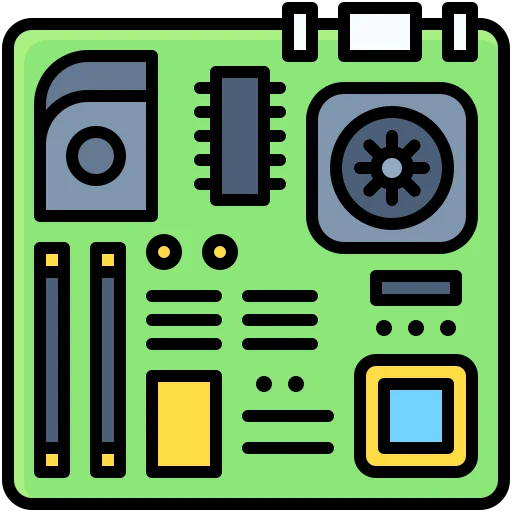Advanced Modal Analysis Systems for Precision Structural Testing
Explore our advanced modal analysis systems designed to optimize structural dynamics, response, and durability testing
Modal Analysis Systems
Modal analysis systems are essential tools for understanding how structures respond to vibrational forces, helping engineers identify natural frequencies, mode shapes, and damping characteristics. These systems are vital for predicting structural behavior, improving product reliability, and preventing failures in dynamic environments. From aerospace components to automotive frames and civil infrastructure, accurate modal data plays a crucial role in design validation and failure prevention.
Noise Vibration Monitoring supports businesses across North America with robust, scalable modal analysis solutions. As a leading B2B provider, we empower our clients through innovative testing systems, expert integration services, and ongoing support. Our solutions reflect years of research, development, and practical experience, ensuring the structural integrity of high-value assets in real-world applications
Advanced Modal Analysis Systems for Precision Structural Testing
Explore our advanced modal analysis systems designed to optimize structural dynamics, response, and durability testing
Modal Analysis Systems
Modal analysis systems are essential tools for understanding how structures respond to vibrational forces, helping engineers identify natural frequencies, mode shapes, and damping characteristics. These systems are vital for predicting structural behavior, improving product reliability, and preventing failures in dynamic environments. From aerospace components to automotive frames and civil infrastructure, accurate modal data plays a crucial role in design validation and failure prevention.
Noise Vibration Monitoring supports businesses across North America with robust, scalable modal analysis solutions. As a leading B2B provider, we empower our clients through innovative testing systems, expert integration services, and ongoing support. Our solutions reflect years of research, development, and practical experience, ensuring the structural integrity of high-value assets in real-world applications

1. Hardware Components
In addition to offering products and systems developed by our team and trusted partners for Modal Analysis Systems, we are proud to carry top-tier technologies from Global Advanced Operations Tek Inc. (GAO Tek Inc.) and Global Advanced Operations RFID Inc. (GAO RFID Inc.). These reliable, high-quality products and systems enhance our ability to deliver comprehensive technologies, integrations, and services you can trust. Where relevant, we have provided direct links to select products and systems from GAO Tek Inc. and GAO RFID Inc.
Hardware
In addition to offering products and systems developed by our team and trusted partners for Modal Analysis Systems, we are proud to carry top‑tier technologies from Global Advanced Operations Tek Inc. (GAO Tek Inc.) and Global Advanced Operations RFID Inc. (GAO RFID Inc.). These reliable, high‑quality offerings strengthen our ability to deliver full-spectrum modal testing solutions, enhanced by select GAO technologies where applicable.
- Vibration Meters Vibration Meters – Precision instruments used to capture dynamic modal response data from impact events.
- Mixed Oscilloscope Mixed Oscilloscope – Captures real‑time waveform data during structure excitation, aiding fine mode shape analysis.
- Spectrum Analyzers Spectrum Analyzers – Core hardware for transforming time‑domain signals into frequency spectra needed in modal testing.
- Digital Oscilloscopes Digital Oscilloscopes – Provide high-sample accuracy for transient response capture during hammer strikes.
- Function Generators Function Generators – Controlled excitation sources for repeatable modal excitation and system identification.

Software
- Integrated modal parameter extraction
- FFT-based signal processing
- Curve fitting, damping, and phase mapping
- Compatibility with existing FEA platforms (e.g., ANSYS, Abaqus)
- Real-time visualization and 3D animation of mode shapes

Cloud Services
- Cloud-based storage of time-series datasets
- Automated report generation and project archiving
- Remote collaboration and review of modal test results
- IoT integration for long-term monitoring scenarios
Core Components
Key Features and Functionalities
- High-resolution frequency response function (FRF) measurement
- Compatibility with both impact and shaker excitation methods
- Support for experimental modal analysis (EMA) and operational modal analysis (OMA)
- Real-time diagnostics and automated peak tracking
- Intuitive interfaces for test setup and post-processing
System Integrations and Compatibility
Noise Vibration Monitoring’s modal analysis systems seamlessly integrate with:
- 3D scanning systems and laser doppler vibrometers
- DAQ systems with high channel counts (USB, Ethernet, PXI)
- Finite Element Models (FEM) for validation and comparison
- Existing instrumentation networks (via API or OPC-UA)
Benefits of Modal Analysis Systems
- Optimize structural design and reduce overengineering
- Detect resonant frequencies that can cause damage
- Prevent downtime due to unanticipated failures
- Enhance fatigue and durability performance
- Improve acoustic and vibration performance in design stages
Applications
- Aerospace component validation (e.g., fuselage, wings, turbine blades)
- Automotive chassis and suspension modal tuning
- Bridge and building resonance analysis
- Vibration testing of industrial machinery housings
- Wind turbine tower structural health monitoring
Industries Served
- Aerospace and Defense
- Automotive and Motorsports
- Civil and Structural Engineering
- Renewable Energy
- Electronics and Consumer Products
- Rail and Transit Infrastructure
Relevant U.S. & Canadian Standards
- ISO 7626
- ASTM E756
- MIL-STD-810
- IEEE 1451
- CSA S6-19
Case Studies
U.S. Case Study – Aircraft Wing Modal Validation
A leading aerospace firm in Wichita, Kansas, partnered with us to conduct a full-scale modal test on a new aircraft wing prototype. Using our TLV-880S laser vibrometer and PMX-305Z exciter system, we achieved precise mode shape visualizations and validated FE models within 3% accuracy. The test helped optimize material distribution and reduce structural mass by 12%.
U.S. Case Study – Automotive Suspension Tuning
An electric vehicle OEM in Detroit used our modal systems to test rear suspension behavior during various road simulations. By capturing FRFs across multiple configurations using our DS-442R strain module and ERSM-608T processor, engineers identified unwanted resonance peaks at 48 Hz and mitigated them with redesigned bushings.
Canadian Case Study – Bridge Deck Resonance
A civil engineering consultancy in British Columbia deployed our beamforming-compatible modal tools for a vibration issue on a pedestrian bridge. The analysis revealed natural frequencies interacting with wind harmonics. Structural retrofits were implemented based on the ERSM-608T edge analytics outputs, reducing deflection by over 40%.
Want to Learn More About Our Modal Analysis Systems?
To learn more about our advanced Modal Analysis Systems or to speak with a technical advisor, please Contact Noise Vibration Monitoring. We are here to help you implement scalable, accurate solutions for structural dynamics, testing, and safety

